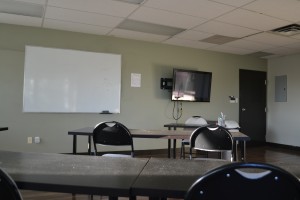Studying Basic Life Support
If you’re looking for basic CPR skills training, then a BLS – basic life support- training program is for you. Basic Life Support skills include giving rescue breaths, chest compressions, and external defibrillation to a person whose heart has stopped beating. This condition is called cardiac arrest and can be caused by many things – primarily ischemic heart disease and stroke, the top two causes of death in the world according to the WHO.
Cardiac arrest is a condition that can lead to death if improperly managed. Minutes cna mean the difference between life and death. If the heart is not pumping enough blood to the rest of the body, it can cause severe oxygen deprivation in the organs, especially the brain. The brain can only survive a few minutes – 7 to 10 minutes – without oxygen before the tissue begins to die.
This is where CPR comes in. CPR manually pumps the heart to send blood to the rest of the body until the spontaneous beating of the heart is restored. Rescue breaths give oxygen to the blood and the chest compressions make it circulate. Defibrillation is done when the heart starts beating again but has an irregular rhythm (arrythmia)
Basic Life Support classes

We offer trainees a choice of three Basic Life Support classes. One is available to the public and the other two are for healthcare providers. BLS classes are very skill-oriented; the short courses usually last around four hours and teach students how to correctly give rescue breaths and chest compressions.
There are two basic CPR classes: Heartsaver and Heartsaver C. The former programa is for the general public and runs for four hours and the latter is for HCPs and runs for 4.5 hours. Heartsaver courses teach basic CPR for a single-person rescue, as well as a few basic first aid skills such as learning how to manage bleeding and choking emergencies. AED training is included in the program.
The general public program is an optional certification class; trainees can opt out of the skills test at the end of training to not get certified.
Basic Life Support for HCPs is the third and last BLS program. As the name of the course suggests, it is only for HCPs. It runs for 4.5 hours and includes both 1 and 2-person CPR training. First aid and AED lessons are still included in this program. Trainees are likewise taught about the latest Basic Life Support guidelines from the AHA. These guidelines are used when giving life support to a victim of cardiac arrest.
The guidelines include the “Chain of Survival”, which has five links or steps:
- Recognizing cardiac arrest
- Starting chest compressions and rescue breathing
- Automated external defibrillation (AED)
- Advanced Life Support
- Post-cardiac arrest care
Certificates
Certificates are valid for two years after we give them out to students at the end of training. They can be renewed through re-certification as long as they are still valid so remember to renew before they expire! Re-certification for BLS is only available for the BLS for HCPs training course. Re-certificaton for BLS for HCPs is 4 hours long.
